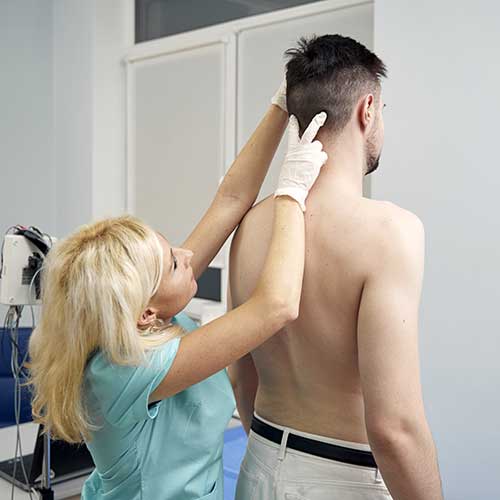A spine surgery It is a procedure that may be indicated in some situations, such as disc herniation, scoliosis, kyphosis, fractures, intervertebral disc wear, spinal nerve compression, spinal canal narrowing, spinal tumor or spinal infection.
surgery indication
Surgery is only indicated after careful analysis of the condition, with clinical evaluation, complete physical examination and imaging tests, such as magnetic resonance and computed tomography.
First, conservative treatment is always indicated, as physiotherapy combined with muscle strengthening promotes relief from spinal pain.
There are different types of spine surgery, which can be more or less invasive, depending on the technique and the region of the spine that will be operated on. Some examples are: discectomy, laminectomy, arthrodesis, arthroplasty, nucleoplasty and microdiscectomy. Each type of surgery has its indications, advantages and disadvantages, and the doctor must explain to the patient the risks and benefits of each one.
Post operative care
After spine surgery, it is important to take some care to avoid complications, even if there is no more pain, such as not lifting weights, driving or making sudden movements.
Post-operative care improves recovery, decreases post-surgery pain and decreases the chances of complications, such as poor healing or movement of screws placed in the spine.
In addition to these precautions, physiotherapy is indicated so that recovery is faster and more effective and, thus, improves quality of life, in addition to the use of medication to control pain according to medical advice.

Care after surgery may vary according to the location of the spine that was performed. For example:
Coluna cervical: do not make quick or repetitive movements with the neck; climb stairs slowly; avoid lifting objects heavier than a carton of milk in the first 60 days; not driving for the first 2 weeks; use neck brace if recommended by doctor.
Thoracic spine: start small walks of 5 to 15 minutes a day; avoid sitting for more than 1 hour; avoid lifting objects heavier than a carton of milk in the first 2 months; avoid intimate contact for about 15 days; not drive for 1 month.
Lumbar spine: avoid twisting or bending your back; take short walks only 4 days after surgery; put a pillow behind your back when you sit down; sleep on your side with a pillow between your knees or on your back with a pillow under your knees; do not smoke or drink alcohol.
In addition to these specific care for each region of the spine, there are some general tips that can help with the success of spine surgery:
- Choose a good professional, with experience in the subject;
- Don’t compare your painting with other people’s. Each case is unique and has a different evolution;
- Take exams like resonance and tomography, they are essential before surgical intervention;
- Keep in mind that there is a need for postoperative rehabilitation, so if you were unable to perform physiotherapy sessions before surgery, they will be essential after surgery;
- Follow medical guidelines regarding the use of medications, dressings and permitted activities;
- Maintain a healthy and balanced diet, rich in proteins, vitamins and minerals. Avoid fatty, sugary or processed foods;
- Drink plenty of water, as hydration is important for healing and preventing infections;
- Practice deep breathing exercises, they help prevent lung complications and relax;
- Have patience and optimism, recovery can be slow, but it is possible to have a good quality of life after spinal surgery.






